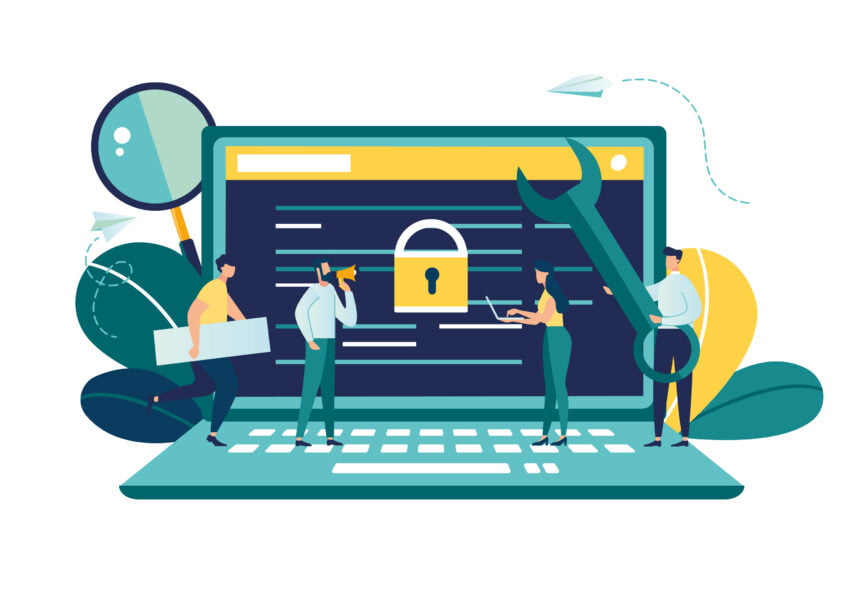Although we’re only a few months into 2022, this year has already seen massive cyberattacks, huge ransomware payouts, and data breaches never witnessed before. On average, damages due to cyberattacks are growing by 15% per year, with a predicted total value of $10.5 trillion lost each year by 2025.
Across the different formats of cybercrime, one continual contender is data breaches, with 60% of businesses that experience any form of data breach going out of business in the following six months.
Data is a vital tool, being used for analysis and business intelligence, as well as a form of keeping a record of important information. When this data is exposed, private figures, financial information, and user passwords are all publicized, leading to huge losses for a company – both financially and in terms of customer trust.
In this article, we’ll be looking at the very best ways that you can keep your data safe when online. We’ll be exploring three distinct methods, each of which has been proven to help protect your data online and decrease your own vulnerability.
Let’s get right into it.
Education Yourself
The first step anyone should take to keep their own data online is to ensure that they’re up-to-speed with what risks are common when browsing the internet. Typically, most people believe that they’re competent in keeping safe online. Yet, with over 2,200 cyberattacks every single day, it’s always better to be safe than sorry.
A lack of awareness is perhaps the most dramatic element that can lead to someone being hacked and their data being exposed online. While some people may think it sounds obvious, never click on links from email accounts you don’t trust; never go onto sites from emails (go on them directly), and if it’s too good to be true, it is.
Understanding how ransomware is distributed within emails and how phishing occurs will ensure that you can spot it when it’s happening. With this, you’ll quickly be able to stop the process and make sure you don’t fall for any scams that you receive.
Awareness is key, which comes through self-education.
Use a VPN
Another form of reducing the risk that your data is involved in a data breach is to ensure that you enlist additional protection services. If you’re a business, this could be hiring a security team to construct more effective defense systems. In our modern age, there is a huge range of different tools that you’ll be able to turn to.
If you’re a singular person, you can still turn to similar tools to keep your data safe. For example, if you ever find yourself browsing over public Wi-Fi, you’re actually placing your data in a jeopardized position. One tool you can enlist to help protect your data at all times is a Virtual Private Network (VPN).
A VPN will act as another layer that protects your data, helping to keep it safe. Instead of being able to access your device through a shared Wi-Fi connection, anyone with malicious intent will be blocked by the VPN connection, further obfuscating your data and making it virtually impossible for a hacker to gain access to them.
Between enterprise-level solutions and more user-friendly approaches, there is a huge range of different tools that you can enlist to make sure your data stays private.
Conduct Security Testing
While a system of defenses may be enough to deter the vast majority of individual hackers, considering that businesses have paid out upwards of $20 billion in 2021 by ransoming data they stole from companies, there are still those out there that attack highly protected businesses.
Part of how hackers operate is they work on finding weak points in your company’s attack surface. This could be anything from an open port to a user account that has a weak password, gaining access into the system and then being able to take control and random data.
One way to make sure that your company has defenses that won’t fall prey to data breaches is to perform continuous security penetration testing. Depending on what you need, there are a couple of penetration testing service options to choose from. It could be a group exercise of Red and Blue teaming, with the red team trying to break in while the blue tries to stop them – the end result is finding a range of weak points in your company security.
Equally, it could be an automatic extended security posture management system that will move through your security defenses and attempt to find entry points. Once an entry point is found, your security team will be alerted, allowing them to fix it before real problems are encountered.
One excellent aspect of these tools is that they’re continually updated with the most up-to-date hacking methods. Due to this, your system will be tested against new hacking methods, perhaps even before your security team learns about them, always keeping your security up-to-date, no matter the hour.
By moving through the MITRE attack framework, these systems will test your platform against all the known hacking methods, ensuring that your data is always as protected as possible.
Final Thoughts
Data theft is a common practice on the internet, with hefty ransom payments and massive impacts on both businesses and personal individuals, causing hackers to target this stream of attack. When working online, you’re inherently going to run into threats now and again. The most important thing is making sure you know exactly how to react, not falling into any typical scams or traps.
By making sure that you’re educated in all the different ways that data is breached online, you’ll be in a much better position to keep yourself out of the mounting figures. Additionally, by investing in defense tools that keep your data safe, you’ll be placing another layer between you and your data being exposed.
Finally, by making sure that any cyber defense systems that you regularly use are up-to-date and as comprehensive as possible, you’ll be well on your way to creating a secure system. With these three pillars, you’ll be able to keep your data safe online.









